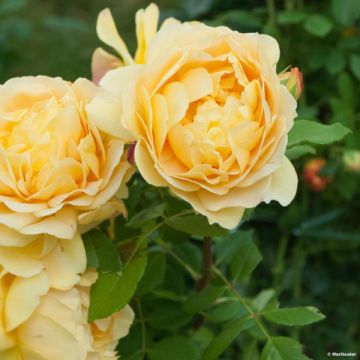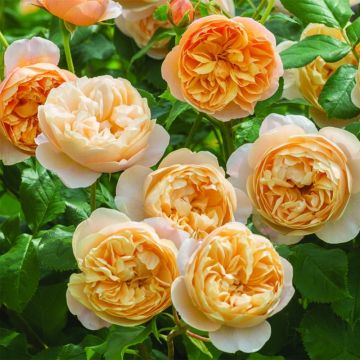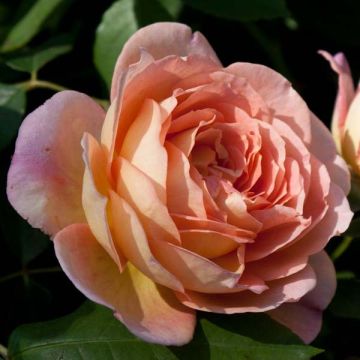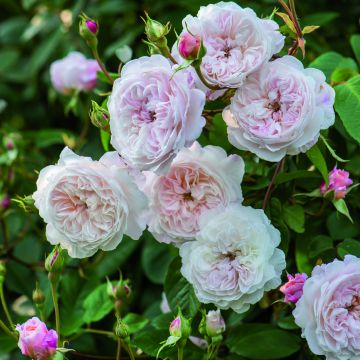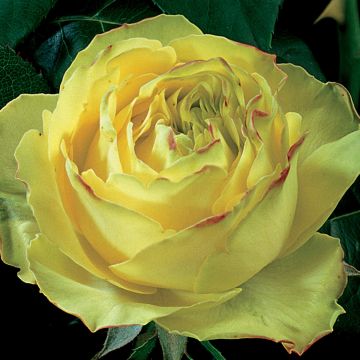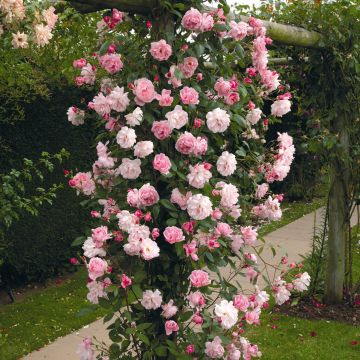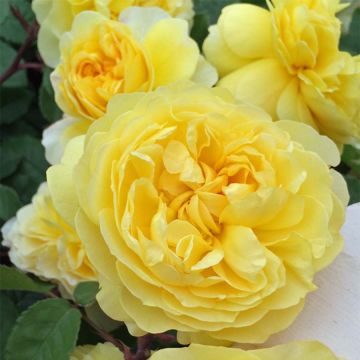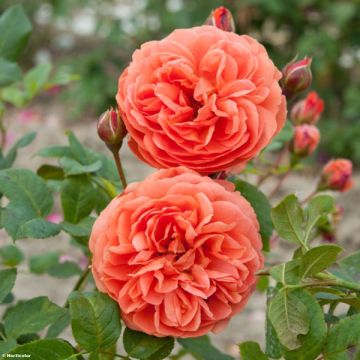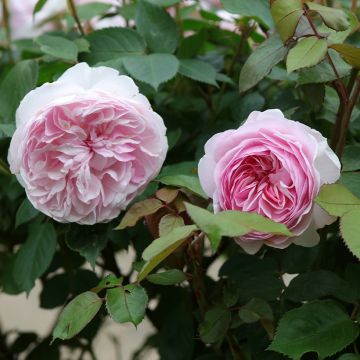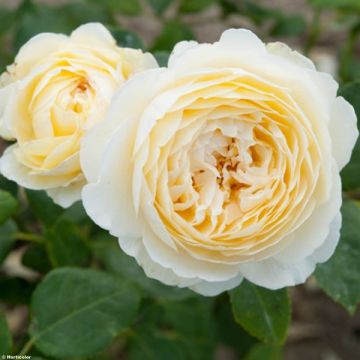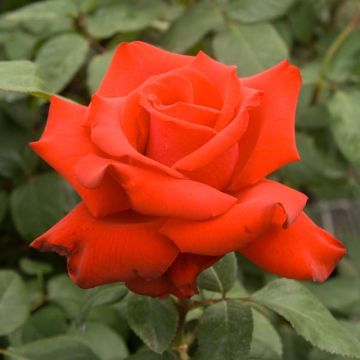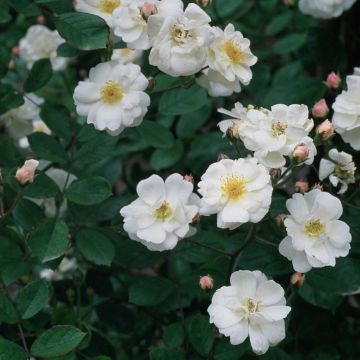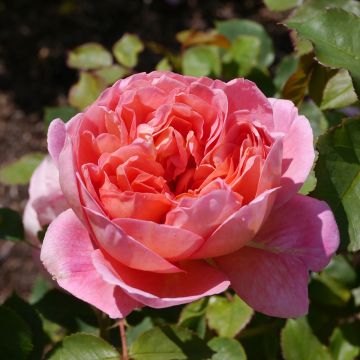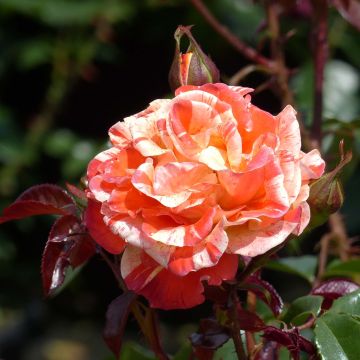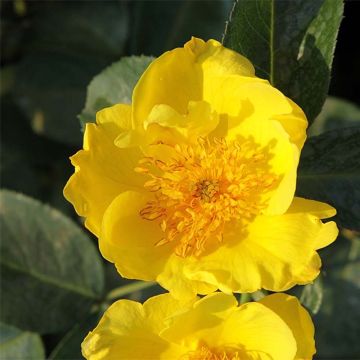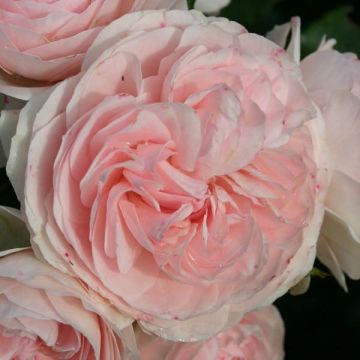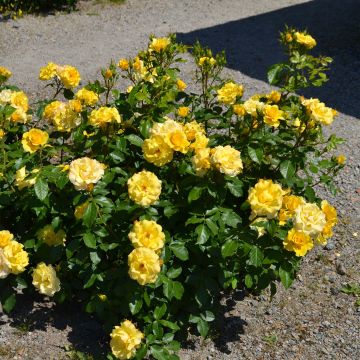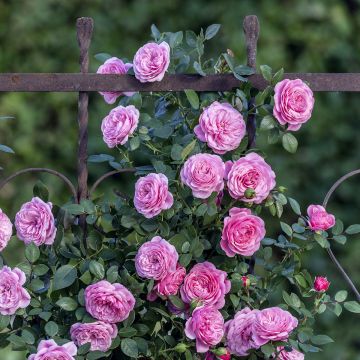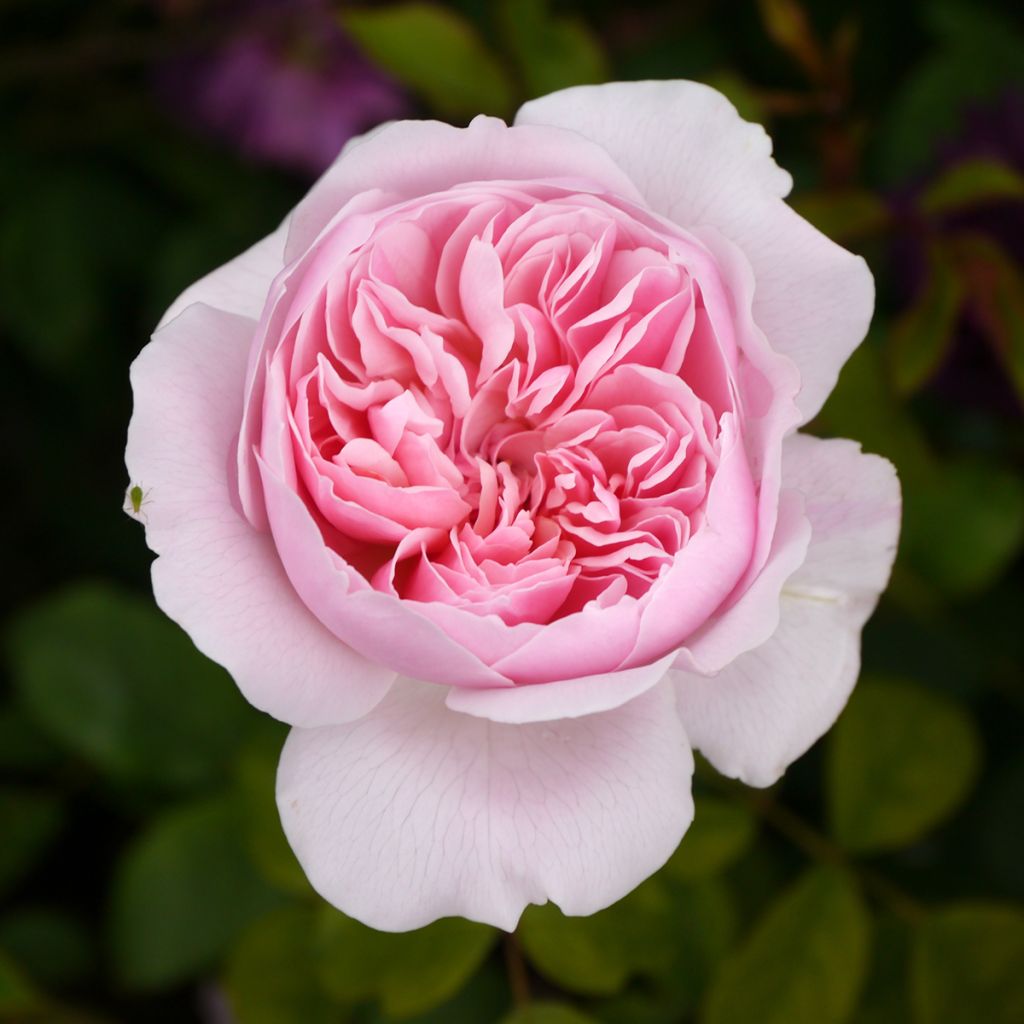

Rosa 'Wisley 2008' - English Rose
Rosa 'Wisley 2008' - English Rose
Rosa Wisley 2008® 'Ausbreeze'
Ausbreeze
This item cannot be shipped to the selected country
Delivery charge from €5.90
Delivery charge from €5.90
Delivery to Corse prohibited
More information
Schedule delivery date,
and select date in basket
This plant carries a 24 months recovery warranty
More information
We guarantee the quality of our plants for a full growing cycle, and will replace at our expense any plant that fails to recover under normal climatic and planting conditions.
From €5.90 for pickup delivery and €6.90 for home delivery
Express home delivery from €8.90.
From €5.90 for pickup delivery and €6.90 for home delivery
Express home delivery from €8.90.
Delivery to Corse prohibited: UE law prohibits the import of this plant from mainland France to Corse as part of the fight against Xylella fastidiosa. Please accept our sincere apologies.
More information
Does this plant fit my garden?
Set up your Plantfit profile →
Description
The English rose 'Wisley 2008' or 'Ausbreeze' combines the naturalness of a bush rose and the grace of sophisticated flowers, which borrow their charm from old roses. Forming a medium-sized bush, practically as wide as it is tall, covered with medium green foliage, it is covered in flowers throughout the beautiful season. Superb, double-cup-shaped roses in a light pink colour diffuse a slight fragrance with fruity notes. The dense habit of this rose allows it to be used both in a varied flower bed and in a hedge.
This rose is a creation of the English Rose Breeder David Austin, who alone sums up the philosophy: combining the charm of old roses, visually and in terms of fragrance, with the qualities of modern roses, notably the length of flowering. During his long career, he created over 200 varieties since 1961, making him famous among the breeders, and gradually enriched the demonstration garden next to his nursery in Albrighton, northwest of Birmingham.
As a major member of the Rose family, the genus Rosa is rich in botanical species, and many horticultural hybrids are classified into major categories. Old Roses are not officially one of them, but their reputation is sufficient to consider them a well-defined group.
'Wisley 2008' was named in reference to the famous RHS (Royal Horticultural Society) garden and bears in its name the year it was introduced to the market. The following year, it was awarded at the Barcelona International Rose Competition as the best landscape rose. It has a very natural habit, forming a dense bush of about 1.40 m (5ft) in height and almost as wide. This vegetal dome is adorned with medium green foliage, slightly shiny, which blends beautifully with other freely shaped shrubs. Resistant to diseases, the healthy foliage serves as a backdrop for flowers that bloom from June to October in successive waves and even better when faded flowers are removed to encourage repeat flowering.
The double roses comprise approximately 95 light pink petals, with the outer ones being lighter and forming a shallow cup, in which the centre petals form a complicated rosette. This morphology of an old rose is truly David Austin's signature and gives 'Wisley 2008' an irresistible charm. It also offers a moderately intense fragrance with fruity notes of raspberry and tea. Measuring 8 to 9 cm (3 to 4in) in diameter, the roses bloom at the ends of the stems, either individually or in corymbs (bouquets) of 3 to 5 flowers.
This rose can be versatile as a solitary plant to showcase its beautiful roses, or in groups, amidst a flower bed or within a hedge due to its natural habit. Plant low perennials or shrubs at its base, such as the Japanese Spirea Albiflora, which will form a cushion of greenery adorned with white flowers in July-August. The Gaura lindheimeri Snowbird, a perennial about sixty centimetres in height, will accompany 'Wisley 2008' throughout the summer with its small white flowers undulating in the wind, giving a natural aspect to a flower bed in perfect harmony with English roses. Summer is also rich in blue blooms that will beautifully complement the pink of 'Wisley 2008'. One can think of Perovskias, which form dense and highly floriferous clumps with beautifully grey foliage and Caryopteris. Choose a variety with golden foliage like Hint of Gold to create a double contrast of colour in both flowering and foliage.
Report an error about the product description
Plant habit
Flowering
Foliage
Botanical data
Rosa
Wisley 2008® 'Ausbreeze'
Rosaceae
Ausbreeze
Cultivar or hybrid
Other David Austin Roses
Planting and care
Plant your English Rose 'Wisley 2008' from November to March in ordinary, well-prepared, well-fertilised and well-drained soil. Roses prefer claysoils, rather heavy than light. In soil that is too sandy, too compact or too dry in summer, it is advisable to add compost or well-rotted manure to the substrate when planting. Soak the root ball in a bucket of water for fifteen minutes before planting, then place the rose in the planting hole, fill in around it and water thoroughly. Then, water regularly during the first year and increasingly space out afterwards to force the roots into the soil.
Plant this rose in a sunny location or, at most, in partial shade in hot climates. Roses are hungry plants so that a specific fertiliser will be beneficial at the start of vegetation and regularly throughout the flowering period. Preferably choose organic fertilisers richer in potash (the K in the NPK formula) than nitrogen (the N).
Roses may develop unsightly spots at the end of summer, but these are natural and not harmful to the plant's growth.
Planting period
Intended location
Care
-
, onOrder confirmed
Reply from on Promesse de fleurs
Roses by purpose
Haven't found what you were looking for?
Hardiness is the lowest winter temperature a plant can endure without suffering serious damage or even dying. However, hardiness is affected by location (a sheltered area, such as a patio), protection (winter cover) and soil type (hardiness is improved by well-drained soil).

Photo Sharing Terms & Conditions
In order to encourage gardeners to interact and share their experiences, Promesse de fleurs offers various media enabling content to be uploaded onto its Site - in particular via the ‘Photo sharing’ module.
The User agrees to refrain from:
- Posting any content that is illegal, prejudicial, insulting, racist, inciteful to hatred, revisionist, contrary to public decency, that infringes on privacy or on the privacy rights of third parties, in particular the publicity rights of persons and goods, intellectual property rights, or the right to privacy.
- Submitting content on behalf of a third party;
- Impersonate the identity of a third party and/or publish any personal information about a third party;
In general, the User undertakes to refrain from any unethical behaviour.
All Content (in particular text, comments, files, images, photos, videos, creative works, etc.), which may be subject to property or intellectual property rights, image or other private rights, shall remain the property of the User, subject to the limited rights granted by the terms of the licence granted by Promesse de fleurs as stated below. Users are at liberty to publish or not to publish such Content on the Site, notably via the ‘Photo Sharing’ facility, and accept that this Content shall be made public and freely accessible, notably on the Internet.
Users further acknowledge, undertake to have ,and guarantee that they hold all necessary rights and permissions to publish such material on the Site, in particular with regard to the legislation in force pertaining to any privacy, property, intellectual property, image, or contractual rights, or rights of any other nature. By publishing such Content on the Site, Users acknowledge accepting full liability as publishers of the Content within the meaning of the law, and grant Promesse de fleurs, free of charge, an inclusive, worldwide licence for the said Content for the entire duration of its publication, including all reproduction, representation, up/downloading, displaying, performing, transmission, and storage rights.
Users also grant permission for their name to be linked to the Content and accept that this link may not always be made available.
By engaging in posting material, Users consent to their Content becoming automatically accessible on the Internet, in particular on other sites and/or blogs and/or web pages of the Promesse de fleurs site, including in particular social pages and the Promesse de fleurs catalogue.
Users may secure the removal of entrusted content free of charge by issuing a simple request via our contact form.
The flowering period indicated on our website applies to countries and regions located in USDA zone 8 (France, the United Kingdom, Ireland, the Netherlands, etc.)
It will vary according to where you live:
- In zones 9 to 10 (Italy, Spain, Greece, etc.), flowering will occur about 2 to 4 weeks earlier.
- In zones 6 to 7 (Germany, Poland, Slovenia, and lower mountainous regions), flowering will be delayed by 2 to 3 weeks.
- In zone 5 (Central Europe, Scandinavia), blooming will be delayed by 3 to 5 weeks.
In temperate climates, pruning of spring-flowering shrubs (forsythia, spireas, etc.) should be done just after flowering.
Pruning of summer-flowering shrubs (Indian Lilac, Perovskia, etc.) can be done in winter or spring.
In cold regions as well as with frost-sensitive plants, avoid pruning too early when severe frosts may still occur.
The planting period indicated on our website applies to countries and regions located in USDA zone 8 (France, United Kingdom, Ireland, Netherlands).
It will vary according to where you live:
- In Mediterranean zones (Marseille, Madrid, Milan, etc.), autumn and winter are the best planting periods.
- In continental zones (Strasbourg, Munich, Vienna, etc.), delay planting by 2 to 3 weeks in spring and bring it forward by 2 to 4 weeks in autumn.
- In mountainous regions (the Alps, Pyrenees, Carpathians, etc.), it is best to plant in late spring (May-June) or late summer (August-September).
The harvesting period indicated on our website applies to countries and regions in USDA zone 8 (France, England, Ireland, the Netherlands).
In colder areas (Scandinavia, Poland, Austria...) fruit and vegetable harvests are likely to be delayed by 3-4 weeks.
In warmer areas (Italy, Spain, Greece, etc.), harvesting will probably take place earlier, depending on weather conditions.
The sowing periods indicated on our website apply to countries and regions within USDA Zone 8 (France, UK, Ireland, Netherlands).
In colder areas (Scandinavia, Poland, Austria...), delay any outdoor sowing by 3-4 weeks, or sow under glass.
In warmer climes (Italy, Spain, Greece, etc.), bring outdoor sowing forward by a few weeks.

































